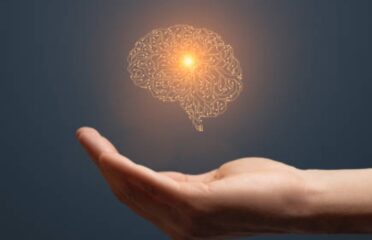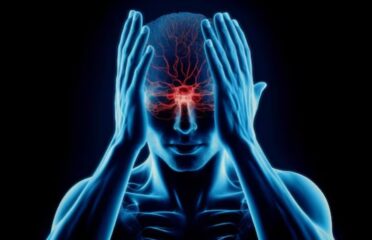Headache
Overview
Generally, a headache is defined as pain in your head or face that is described as a pressure that can be mild and irritating, throbbing, constant, or sharp. Headaches differ greatly with pain type, severity, location, and frequency of how often they occur.
Headaches could present with causes that may not be due to an underlying disease. Examples can be many like - lack of sleep, a wrong eyeglass prescription, stress, loud sounds, hunger, dehydration, toothache, tight headwear, etc.
Headaches are a very common condition that individuals experience many times during their lives. A headache is the most common form of pain and could be a reason for days missed at work or school, and even visits to healthcare professionals.
While most headaches may not be dangerous, some could be of concern.


Symptoms
The main symptom of a headache could be pain in the head and face.
• Severe pain on one side of the head, usually behind one eye - Generally bearable.
• The affected eye might be red and watery with a droopy lid and small pupil, causing swelling of the eyelid – The intensity of the headache increases with exposure to very bright light and sound.
• Runny nose or congestion, leading to swelling of the forehead and the around the temples.
• A sudden new and severe headache, including headaches that occur after a head injury or accident.
• A constant cough from eating cheese, chocolates, fermented foods, alcohol, etc. is another symptom of a headache.
• A headache with a fever, shortness of breath, stiff neck, and rash.
Causes & Risks
Causes of headaches could be –
• A headache can result from signals interacting among the brain, blood vessels, and surrounding nerves. It can also be due to cold, toothache, any kind of stress, medications, diet, jaw issues, and illnesses of the ear, eye, nose, and throat.
• Multiple mechanisms activate specific nerves during a headache that affects muscles and blood vessels. These nerves send pain signals to the brain, causing a headache.
• Headaches can also get started by environmental factors shared in a family’s household, like - Consuming certain foods like alcohol, caffeine-rich, fermented foods, chocolate, and cheese.
• Exposure to allergens is another reason for headaches.
• Passive smoke.
• Strong odours from household chemicals or perfumes.


Test & Diagnosis
Most people may not need special diagnostic tests. But if a person has headaches on and off, or if they are very severe, the doctor may suggest a CT scan or MRI to look for problems inside the brain that might cause your headaches.
• Headaches can be diagnosed with advanced diagnosis techniques.
• Erythrocyte sedimentation rate is a blood test that can detect any kind of inflammation.
• A minimally invasive test called ‘Digital subtraction angiography, uses X-ray and iodine contrast to produce pictures of blood vessels in the brain.
• The healthcare provider will complete a physical examination, and discuss the medical history, and the headache symptoms.
• An EEG also will be required unless the individual has fainted during the episode.
Headache Treatment
Scans and other imaging tests do not help in diagnosing migraines, clusters, or tension-type headaches unless they are caused due to some other medical conditions.
• A CT scan or MRI can help determine if your headaches are connected to an issue with your central nervous system. Both of these tests produce cross-sectional images of your brain that can show any abnormal areas or problems.
• Hot or cold compresses to your head or neck can help relieve the pain.
• Massage and small amounts of caffeine can do good too.
• Over-the-counter medicines are a good choice such as ibuprofen and aspirin.
• Prescription medications including triptans are prescribed if the pain is of a higher degree.


Living With Headache
Managing headaches and living with one can significantly impact daily life. This can lead to discomfort and affect overall well-being.
The experience of a headache can be different with different individuals, from occasional mild uneasiness to chronic and debilitating pain, and managing them involves identifying triggers, like stress, lack of sleep, specific foods, and environmental factors, to reduce their occurrence.
Some individuals may feel better with mild medication, while others may need stronger and prescribed dosages or alternative therapies.
Even though we may think that it is just a headache and nothing to be worried about – it can disrupt daily activities, difficulty concentrating, working, or even participating in social activities.
Lifestyle changes like scheduled exercise, managing stress, and consuming a balanced diet can certainly help reduce the frequency of headaches. Exploring various treatment options that can aid in managing and improving the quality of life.
Complications
In rare cases, headaches can lead to complications that impact life.
• Severe headaches might contribute to persistent pain, leading to difficulties in focusing, sleeping, and carrying out routine tasks.
• Repeated headaches can lead to emotional distress, anxiety, or depression. Also, frequent use of certain medications for headache relief can result in medication overdose headaches, aggravating the problem.
• Headaches can also be a symptom of more serious health issues that require medical attention, like migraines, high blood pressure, or a neurological condition.
• Sudden-onset headaches, when accompanied by other symptoms such as vision changes or weakness, might indicate a serious condition requiring immediate medical attention.
• Guidance from healthcare professionals can help identify and manage potential complications associated with headaches.


The Content is not intended to be a substitute for professional medical advice, diagnosis, or treatment. Always seek the advice of your physician or other qualified health provider with any questions you may have regarding a medical condition.
Know more about
Our Healthcare Planner
Personal Health Planner at BNC is a support staff who listens to your concerns and connects you with a Neuro Care provider. They prioritize your needs and create a trusting relationship between you and the provider.
Three fundamental values we can assure you:
1. Personalized Healthcare.
2. Most advanced robotic therapies
3. Transparent pricing





